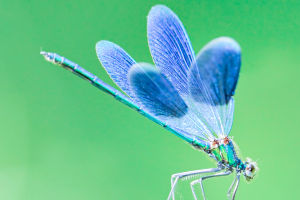Tropical fish are a type of freshwater fish that live in tropical and subtropical regions, often kept as ornamental fish.
They exhibit diverse colors, shapes, and behavior patterns, with significant differences between species. To maintain their health, tropical fish require appropriate water quality and temperature, so water quality management and proper temperature control are essential when keeping them.
In addition to being kept as ornamental fish, some species of tropical fish are also used for scientific research or commercial breeding.
Tropical fish have wide applications in scientific research. They are used to study neurobiology, behavior, environmental toxicology, etc., because of their short life cycles, easy observation, and manipulation, and their genomes have been widely studied.
Moreover, some species of tropical fish are used for medical research, such as disease models and drug screening.
In terms of commercial breeding, tropical fish are one of the world's most important aquaculture products. Traditional tropical fish farming has been around for centuries in Southeast Asia, especially in China, India, Vietnam, and other countries, and modern tropical fish farming uses high-tech equipment, sophisticated management controls, and water quality monitoring systems to achieve sustainable and efficient production.
These breeding technologies have been widely applied, creating a vast industry. Meanwhile, turning from wild capture to breeding is a sustainable development strategy for protecting natural ecology.
So, how can we scientifically keep tropical fish? The specific methods of keeping tropical fish are as follows:
1. Prepare the aquarium and equipment
Choose an appropriate size (generally 20-30 liters) aquarium and equip it with a filter, heater, air pump, thermometer, and pH tester. Additionally, add biological environments such as driftwood, rocks, grass, aquatic plants, etc.
2. Feeding
Provide dedicated feed formulated for tropical fish, while adding natural food such as worms, water fleas, small crustaceans, etc., to enrich the fish's nutritional intake.
3. Maintain water quality
Regularly replace water, usually once a week or every two weeks, and clean up the bottom of the tank. Also, maintain stable chemical composition by testing pH, hardness, ammonia, and other indicators.
4. Environmental adaptation
When introducing new fish, let them adapt to the new environment gradually. Float the fish bag on the surface of the water first, allowing the aquarium's water to slowly flow into the bag until the water level in the bag reaches that of the tank before releasing the fish.
5. Regular cleaning
Regularly clean the filter, aquatic plants, etc., to ensure sanitary conditions within the aquarium.
6. Monitor tropical fish behavior
Observe the fish's appetite, swimming, color changes, etc., to detect any abnormal conditions such as strange behavior or illness.
Keeping tropical fish requires investing time and effort, but with appropriate methods and measures, tropical fish can grow healthily, and people can enjoy the pleasure brought by these lovely creatures.
Tropical fish are not only popular among hobbyists, but they also play an essential role in the ecology of their native habitats. In the wild, tropical fish live in rivers, streams, and lakes, where they serve as a food source for larger predators and help maintain the balance of the ecosystem.
However, overfishing and habitat destruction have posed significant threats to many species of tropical fish. Therefore, it is crucial to protect their natural habitats and prevent illegal fishing activities that could lead to their extinction.


